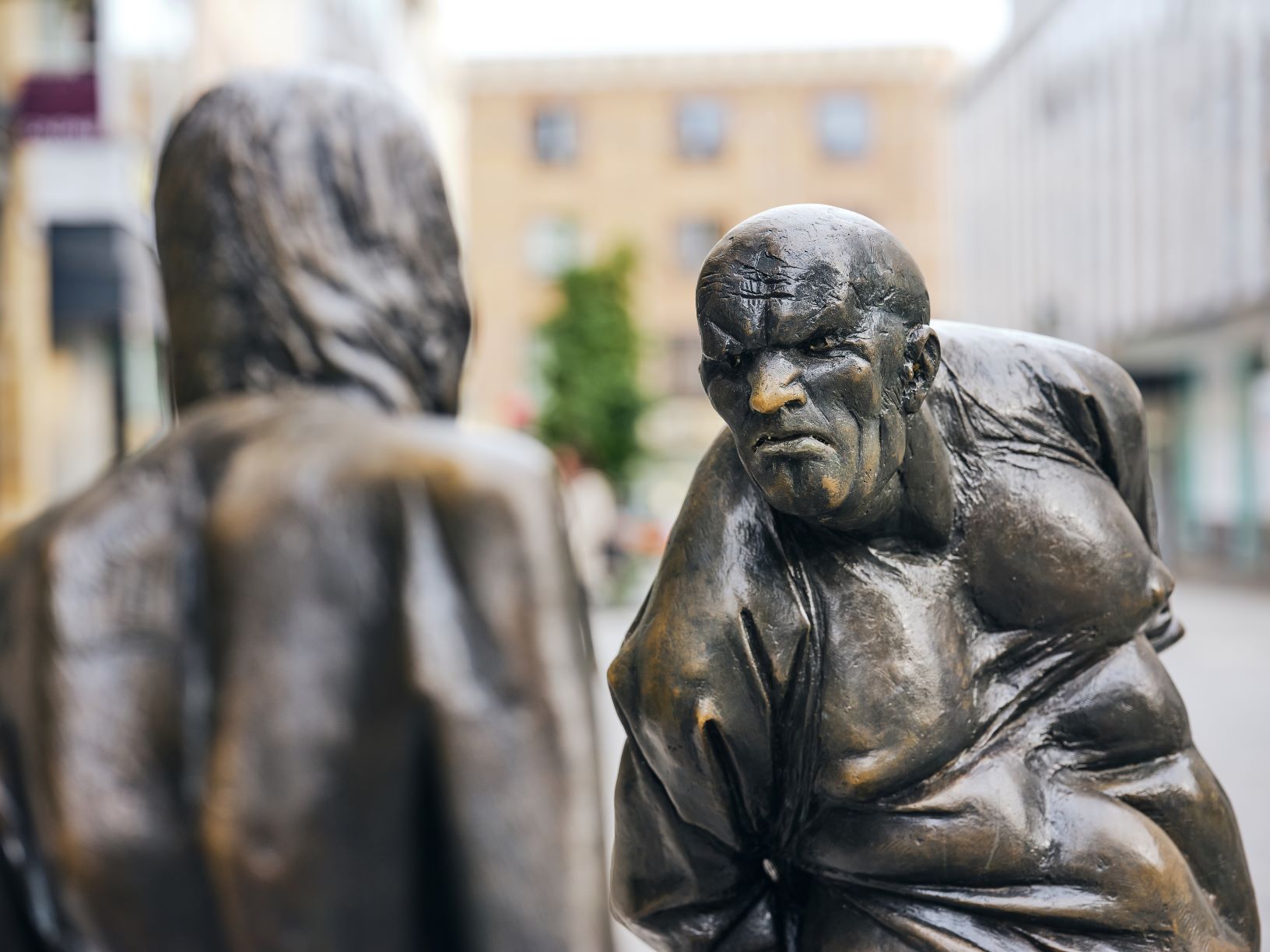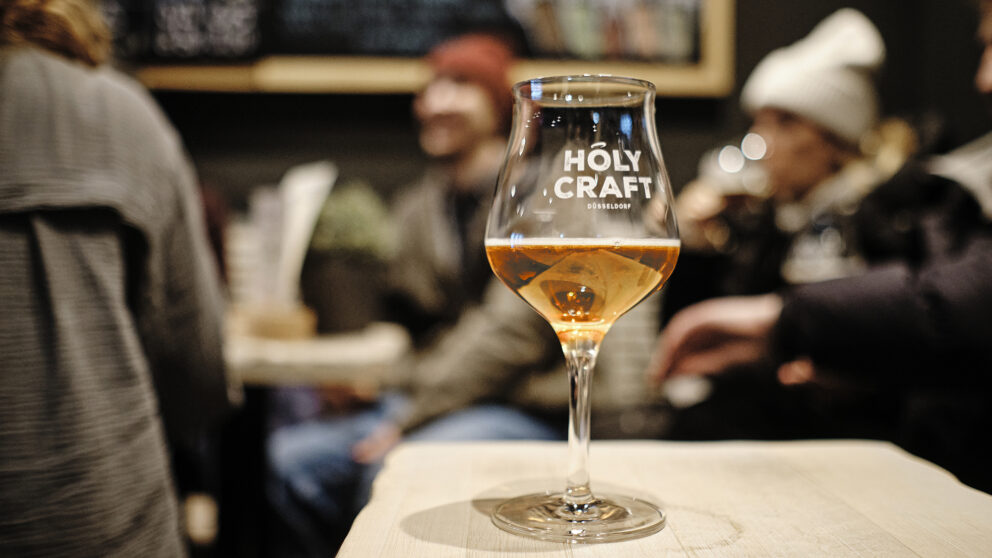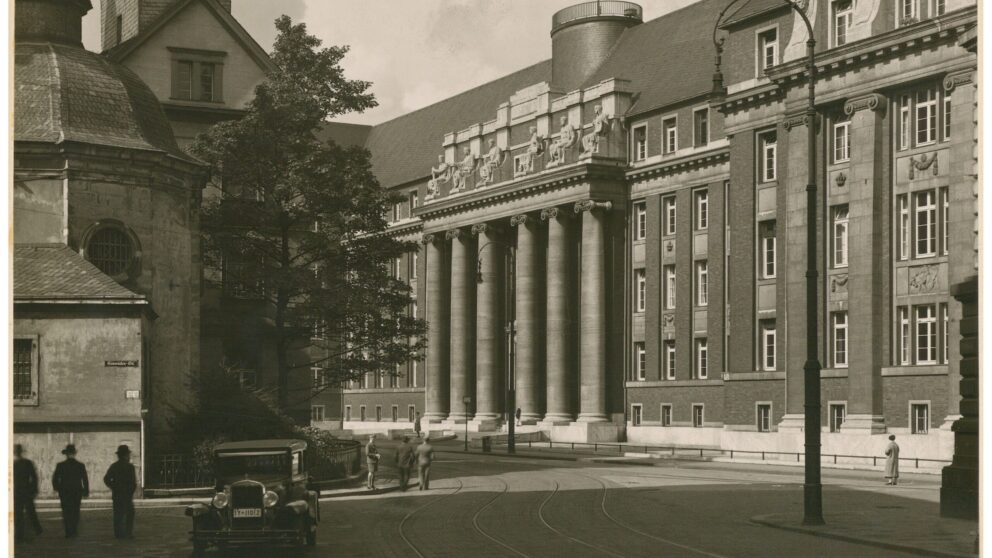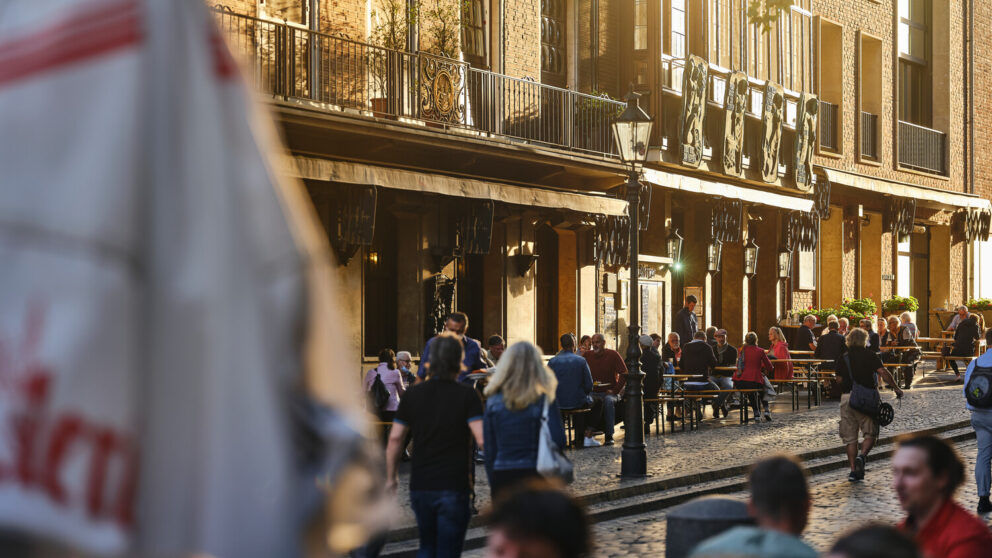
The most peaceful conflict in Düsseldorf’s Old Town
Der Dicke & der Dünne – the city’s most photographed statue
The most popular photo opportunity in the Old Town is a statue created by Karl-Henning Seemann. If you Google Seemann’s name, Der Dicke & der Dünne – ‘fat man & thin man’ in English – is one of the first hits. Seemann, a sculptor and graphic artist, created the city’s most photographed statue at the end of the 1970s, and these days his installation can be seen across social media. If you check out Instagram, for example, you might think that nothing is photographed more often in Düsseldorf.
The sculpture ‘Auseinandersetzung’ – to give it its official name, which means ‘conflict’ in English – is located in the Old Town between Düsseldorf’s famous market and the microbreweries. Any number of visitors and locals pass by here every day. And if you happen to be standing in the usual Friday queue outside the popular Hinkel bakery, you simply cannot miss the statue. Teenagers, tourists and couples can often be seen posing between ‘father-in-law’ and ‘son-in-law’.
Karl-Henning Seemann is now 87 years old and lives in Löchgau in the Ludwigsburg district. (Editor's note: Karl-Henning Seemann sadly passed away in January 2023.) For us, he recalled the genesis of his great work. Surprisingly, Düsseldorf owes the statue not least to the Frankfurt squatter scene. And "the skinny one" could be Joschka Fischer, who played a central role there at the time.
How did you do it, Mr Seemann?
Back in 1977/78, I had no idea that I was creating what would become the most photographed statue in Düsseldorf, of course! It was a second casting of two figures from a group of three that I had designed in 1974 for the barracks of the Braunschweig riot police. The commission was discussed at a difficult time for the police. And after the turmoil of the student protests, it was also the height of Frankfurt’s squatter community.
When I presented a 1:10 scale model of ‘Auseinandersetzung’ – of the two figures – in the barracks’ crowded and overheated assembly hall, there was uproar. The police viewed the angry fat man as a representation of the hated cops, and the long-haired guy in trainers as the poor, innocent law-breaker, someone like Joschka Fischer, perhaps. My explanation certainly didn’t persuade them otherwise. The solution was to add a third, neutral figure as a representation of the police, and this group of three was accepted.

In the meantime, Düsseldorf’s culture office had acquired a half-scale version of the statue. With the permission of the regional authorities in Hannover, I replaced this version with a second casting of the life-size figures and installed them in Düsseldorf. After all, they weren’t accessible to the public on the premises of Braunschweig’s police.
What the conflict might have sounded like
From the outset, my intention was to reflect the generational conflict during these turbulent times, which also affected me as a young university tutor. You can picture the portly older man angrily shouting at his younger counterpart: "You lot need to get an education first and then match the effort we, your fathers, put into rebuilding our shattered country, instead of stirring up trouble with your awful protests!" And the rebellious young man might reply: "You’re always going on about how hard you worked to rebuild this country, but isn’t it your fault that it all went to hell in the first place? You’re quite happy to brush over that and never mention it!"
That is one way the quarrel, or conflict, might have run. It was certainly a conflict that involved the riot police often enough.
‘Auseinandersetzung’ isn’t the only work by Seemann in Düsseldorf’s Old Town. He also created ‘Schuhanzieherin’, or ‘woman putting on her shoe’, on the corner of Mühlenstrasse/Liefergasse.
Title image and last gallery: Düsseldorf Tourismus
Second gallery: Karl-Henning Seemann






